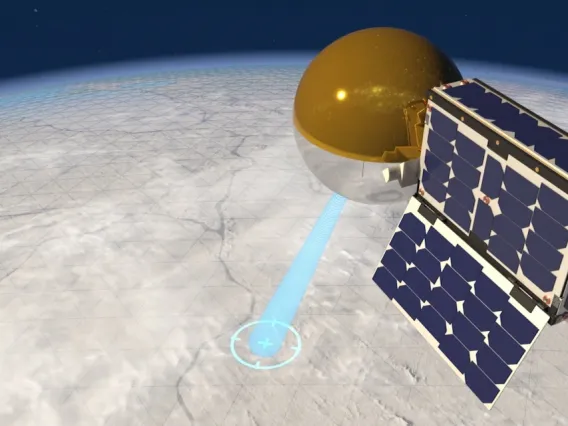LPL Spotlight Stories

Catalina Sky Survey Wants Your Help Hunting for Asteroids
Anyone with an internet connection can now join University of Arizona researchers as they work to discover asteroids hurtling through our solar system.
Webb Finds Water Vapor, But From a Rocky Planet or Its Star?
GJ 486 b is about 30% larger than the Earth and three times as massive, which means it is a rocky world with stronger gravity than Earth. It orbits a red dwarf star in just under 1.5 Earth days. It is too close to its star to be within the habitable zone, with a surface temperature of about 800 degrees Fahrenheit. And yet, Webb observations show hints of water vapor.

Asian Pacific Islander Desi American Heritage Month Faculty Spotlight: Dr. Renu Malhotra
The College of Science is celebrating Asian Pacific Islander Desi American (APIDA) Heritage Month with Dr. Renu Malhotra, a Regents Professor and Louise Foucar Marshall Science Research Professor in the Planetary Sciences department.

Icy Moonquakes: Surface Shaking Could Trigger Landslides
Quakes could be the source of the mysteriously smooth terrain on the moons circling Jupiter and Saturn, according to a new study led by a University of Arizona graduate student.LPL Students Observe and Track “Near-Miss” Asteroid
As a sizable asteroid makes a close pass by Earth, a team of University of Arizona students is ready to observe the action to practice and test procedures that could be useful in mitigating an impending asteroid impact in the future.

LPL Alum Maria Steinrueck wins 51 Pegasi b Fellowship
The 51 Pegasi b Fellowship provides postdoctoral scientists with the opportunity to conduct theoretical, observational, and experimental research in planetary astronomy.
6 Months to Go Until Historic Asteroid Sample Delivery
March 24 marks 6 months until the University of Arizona-led OSIRIS-REx mission is scheduled to return material from the dawn of the solar system to Earth for study.
3D Radar Scan Provides Clues About Threats to Iconic Alaskan Glacier
Mapping a large coastal glacier in Alaska revealed that its bulk sits below sea level and is undercut by channels, making it vulnerable to accelerated melting in an already deteriorating coastal habitat.
Student-built Satellite Uses 'Beach Ball' for an Antenna
CatSat is a small satellite carrying a new communications concept – an inflatable antenna – into space. The project provides a rare opportunity for students at the University of Arizona to get hands-on experience with spaceflight technology.

Economic Impact of UArizona Space Sciences Rivals that of Super Bowl
A new report spotlights the significant impact of University of Arizona space sciences activities, which generate $560.5 million every year for the local economy.
Pagination
- First page
- …
- 5
- 6
- 7
- …
- Last page

